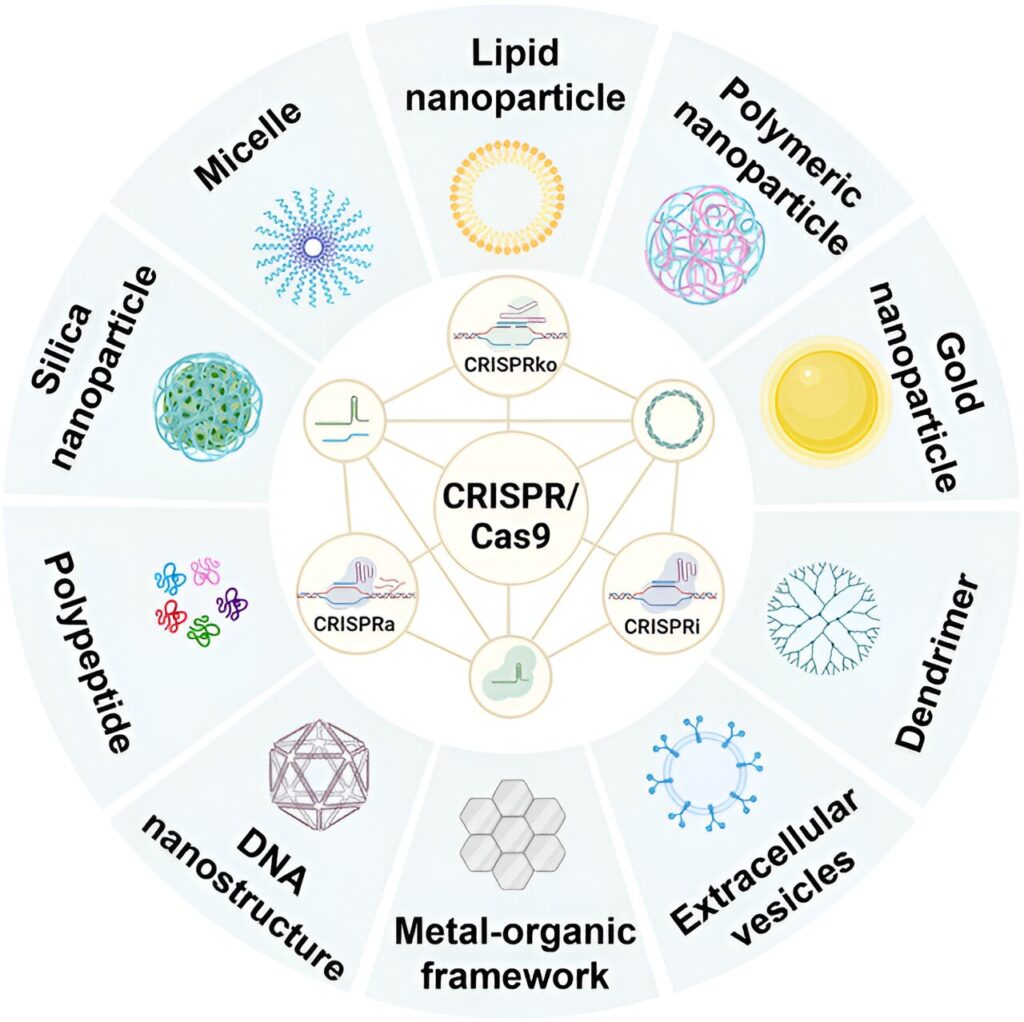In a study published in MedComm—Biomaterials and Applications Professor Changyang Gong and his Ph.D. student Shiyao Zhou elaborate on the mechanism of CRISPR/Cas9 system. The CRISPR/Cas9 system consists of Cas9 protein and single stranded directing RNA (sgRNA).
In the presence of protospacer adjacent motif (PAM), sgRNA accurately leads the Cas9 endonuclease to the target regions, where it causes DNA double strand breaks (DSBs), resulting in site‐specific genomic change. Endogenous DNA repair can take place following the creation of a DSB via two primary genome editing pathways: nonhomologous end joining (NHEJ) or homology‐directed repair (HDR).
By using the biological characteristics of Cas9 targeting specific DNA sequences under the guidance of sgRNA, scientists have further developed gene targeting activation and gene targeting inhibition tools based on dCas9, called CRISPRa and CRISPRi respectively.
In the paper, characteristics of three forms of CRISPR/Cas9 cargos are outlined. Three delivery forms of the CRISPR/Cas9 system are plasmids, mRNA/sgRNA, and ribonucleoprotein (RNP) complexes, each of which has its own advantages and disadvantages.
Nevertheless, regardless of the payload form, it is challenging for CRISPR/Cas9 to penetrate target cells. Therefore, developing an effective nanotechnology strategy for CRISPR/Cas9 delivery is essential.
Nanotechnology‐based delivery techniques for these three categories to treat cancer are summarized in the paper. Though viral vectors are the most commonly used delivery vectors for the CRISPR/Cas9 system, their applications have been limited due to drawbacks such as limited packaging capacity, high immunogenicity, and lack of tissue targeting.
Nanocarriers, concluding cationic lipid‐based nanoparticles, cationic polymer/polypeptide‐based nanoparticles, inorganic nanomaterials, DNA nanostructures, gold‐based nanoparticles and exosomes or extracellular vesicles, are currently hopeful delivery methods for CRISPR/Cas9 systems.
Taking cationic lipid-based non-viral vectors as an example, cationic lipid vectors can load the CRISPR/Cas9 system via electrostatic interactions. In addition, the targeting of vectors can be enhanced by ligand modification or structural modification to promote cellular uptake and improve delivery efficiency.
Triggered by specific intracellular environments or extracellular signals, responsive nanocarriers can also achieve specific release of CRISPR/Cas9 for spatiotemporally controllable gene editing. These nanotechnology-based smart delivery systems significantly improve the tumor therapeutic capabilities of CRISPR/Cas9 system and remarkably reduce its off-target effects.
The researchers provide novel insights regarding future directions of research in the nanotechnology‐based CRISPR/Cas9 system delivery. Gene editing using CRISPR/Cas9 nanotechnology is a new dawn in the field of cancer therapy. The continuous optimization and improvement of CRISPR/Cas9 delivery non-viral vectors show its great potential for research and application in the field of oncology therapy.
Nonetheless, the majority of the research is still in its early phases. CRISPR/Cas9 has many unresolved issues at the molecular level. In conclusion, personalized targeted therapy based on CRISPR/Cas9 may be the future of tumor therapy and bring new hope for tumor treatment.
Provided by
Sichuan International Medical Exchange and Promotion Association


